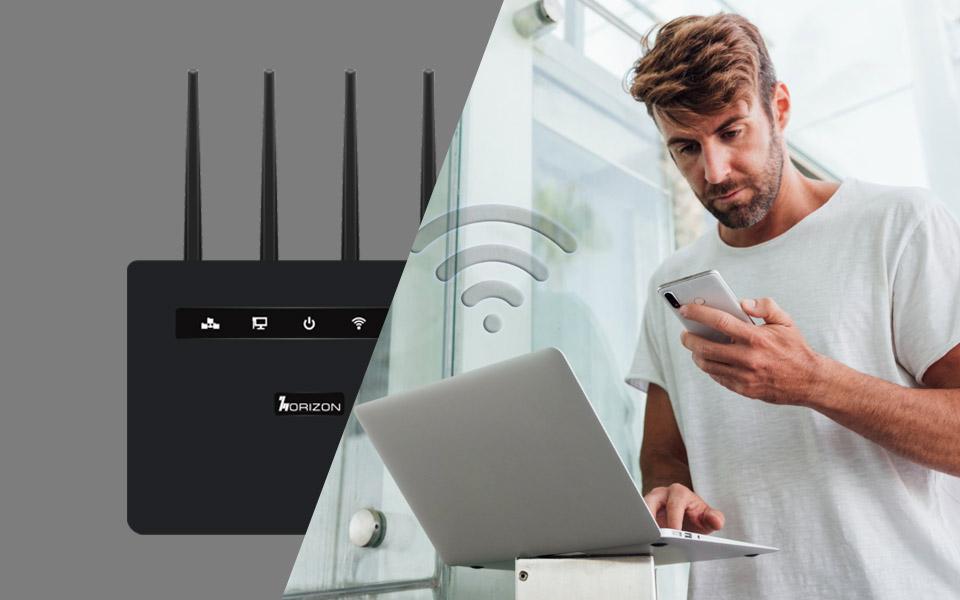Revolutionizing Industrial Efficiency: The Role of Private Wireless in Connecting the Modern Workforce
In the relentless pursuit of efficiency and productivity, industrial enterprises are undergoing a profound digital transformation. Central to this evolution is the imperative to connect workers seamlessly, ensuring optimal performance, safety, and job satisfaction. This article explores the challenges faced by industrial enterprises in this regard and delves into the pivotal role of Private Wireless in overcoming these obstacles.

1. The Imperative for Connected Workers in Industrial Enterprises
1.1 Rising Labor Costs and Workforce Challenges
The industrial landscape is grappling with escalating labor costs, exacerbated by a shortage of skilled workers and high turnover rates. To address these challenges, companies are increasingly investing in technologies designed to enhance worker efficiency, training, safety, and overall satisfaction.
1.2 Technological and Process Inefficiencies
Deloitte reports a staggering estimate: approximately 49% of factory workers lose 10 minutes of productivity per hour due to technological and process inefficiencies. This underscores the critical need for connected worker solutions to streamline operations and bridge these productivity gaps.
2. Connected Worker Solutions: Enhancing Industrial Operations
2.1 Warehouse Management Systems (WMS) for Efficiency Gains
Warehouse Management Systems (WMS) play a pivotal role in boosting worker efficiency. By employing scanners, workers can swiftly locate items in a warehouse or distribution center, resulting in substantial savings—both in labor costs and capital inventory expenses. The ability to scan materials accurately and rapidly anywhere on the premises provides organizations with unparalleled visibility into their inventories.
2.2 Improved Worker Communication: Enabling Seamless Collaboration
In the modern industrial environment, communication is paramount. Connected worker platforms leverage enterprise-issued tablets, smartphones, laptops, push-to-talk (PTT) systems, and voice-picking systems to ensure workers are reachable throughout the facility. This facilitates the dispatch of work orders, ordering of parts, documentation lookup, and real-time communication with experts for efficient troubleshooting.
2.3 Monitoring Worker Safety: A Priority in Hazardous Environments
Safety is a non-negotiable aspect in industrial settings, particularly those prone to toxic gases and other hazardous conditions. Connected workers equipped with smartphones, and wearables like connected helmets and watches, can be proactively and reactively monitored for their well-being. Additionally, IoT sensors and computer vision technologies enhance safety by detecting gas leaks, and fires, and monitoring safety compliance.
2.4 Elevating Worker Engagement and Satisfaction
Beyond the immediate operational gains, connected worker platforms contribute significantly to worker engagement and job satisfaction. By enabling eLearning tools on devices, workers can enhance their skills, collaborate effectively, and improve their overall job satisfaction. A satisfied worker is not just efficient but also more likely to stay engaged and committed.
3. Challenges in Connecting the Connected Worker
3.1 The Dependency on Reliable Wireless Connectivity
While the benefits of connected worker solutions are undeniable, enterprises often realize late in the implementation process that the success of these technologies hinges on reliable wireless connectivity. Traditional solutions like Wi-Fi and public cellular networks, prevalent in office environments, face substantial challenges in industrial settings.
3.2 Wi-Fi Limitations in Harsh Industrial Environments
Wi-Fi, designed for indoor office environments, struggles to provide consistent coverage in the challenging conditions of manufacturing floors, distribution centers, warehouses, refineries, and petrochemical plants. Issues such as poor coverage, unreliable quality of service, and mobility hand-off problems between access points pose significant obstacles.
3.3 Public Wireless Limitations: Coverage and Security Concerns
Public wireless, managed by carriers, presents its own set of challenges. Enterprises may struggle to achieve coverage where needed, and the quality of service may not meet the specific requirements of industrial operations. Moreover, the data transiting through the carrier’s network raises concerns about privacy and security, especially for sensitive information.
4. Private Wireless: A Tailored Solution for Connected Workers
4.1 Definition and Framework of Private Wireless
Private wireless involves the establishment of an LTE/5G network by the enterprise, catering exclusively to its wireless needs. In the U.S., the Citizens Broadband Radio Service (CBRS) band is commonly utilized for private cellular networks, while other bands like n77, n78, and n79 are adopted globally.
4.2 Device Compatibility: Leading Manufacturers in the Fray
Device manufacturers such as Zebra, Apple, Samsung, and others are at the forefront, developing Private Wireless devices specifically tailored for industrial enterprises. These devices ensure seamless integration with the private network, optimizing performance and reliability.
4.3 Key Advantages of Private Wireless
Private wireless offers a myriad of advantages that address the unique challenges of connecting workers in industrial environments:
– Pervasive 5G Coverage: Private wireless ensures comprehensive 5G coverage with significantly fewer access points compared to Wi-Fi.
– End-to-End Security: Robust security measures safeguard data in-flight and at rest, with encryption secured using SIM and eSIM technologies.
– Complete Network Control: Enterprises gain full control over both the network and data, eliminating dependence on public cellular networks.
– Seamless Mobility: Precisely timed roaming managed by network infrastructure ensures uninterrupted connectivity for workers on the move.
– Dedicated Spectrum: Private wireless operates on a dedicated, interference-free spectrum, ensuring reliable and high-quality connectivity.
5. Factors to Consider When Choosing a Private Wireless Solution
5.1 Integration into Existing Enterprise Network
The ease of integrating a Private Wireless solution into the existing enterprise network is a critical consideration. A seamless integration process minimizes disruptions and accelerates the deployment of connected worker initiatives.
5.2 Security Policies and Quality of Service (QoS) Management
Effectively managing security policies and QoS for workers’ devices is paramount. A robust Private Wireless solution should provide comprehensive tools for securing data and ensuring consistent quality of service across the network.
5.3 Device Interoperability
The interoperability of devices is a key factor in the success of a Private Wireless deployment. Compatibility with a range of devices from different manufacturers ensures flexibility and scalability.
5.4 4G or 5G Technology
Choosing between 4G and 5G technology depends on specific requirements. While 4G boasts a strong device ecosystem, 5G represents the future of connectivity, offering enhanced speed and capabilities.
5.5 Global Network Management
For enterprises with multiple sites worldwide, the ability to manage the Private Wireless network seamlessly across various locations is essential. A solution with global network management capabilities ensures consistency and efficiency.
5.6 Indoor Public Cellular Coverage
An effective Private Wireless solution should also be capable of providing reliable indoor public cellular coverage, addressing potential gaps in connectivity within industrial facilities.
6. Implementing Private Wireless: A Surprisingly Feasible Endeavor
Contrary to preconceived notions, setting up Private Wireless for connected workers is more accessible than one might think. With Horizon Powered, enterprises can enhance their Connected Worker initiatives by leveraging the advantages of Private wireless. Horizon Powered stands ready to assist in the seamless integration and deployment of Private Wireless solutions tailored to the unique needs of industrial enterprises.
In the ever-evolving landscape of industrial operations, connecting workers is not just a technological necessity but a strategic imperative. Private Wireless emerges as a transformative solution, addressing the challenges posed by traditional wireless technologies and unlocking new levels of efficiency, safety, and job satisfaction. As industrial enterprises embark on their digital transformation journeys, the role of Private Wireless in streamlining operations and empowering the modern workforce cannot be overstated.
In conclusion, the journey toward a connected workforce in industrial enterprises is marked by a critical need for reliable, secure, and efficient wireless connectivity. Private Wireless stands out as the beacon guiding industries through this transformative path. As companies navigate the complexities of the modern industrial landscape, the advantages of Private Wireless—ranging from enhanced efficiency and safety to improved worker satisfaction—become increasingly apparent.
The challenges of connecting the connected worker are real and formidable, but so are the solutions. Private Wireless not only addresses the limitations of traditional technologies like Wi-Fi and public cellular networks but also opens new possibilities for seamless connectivity and operational excellence. The strategic implementation of Private Wireless, with due consideration to factors like integration, security, and device interoperability, can catalyze a paradigm shift in how industrial enterprises approach their workforce connectivity.
Enterprises looking to embark on this transformative journey need not be daunted. Setting up Private Wireless for connected workers is not only a viable solution but, with the right partners like Horizon Powered, it becomes a surprisingly feasible endeavor. The expertise and support offered by such partners ensure a smooth transition, allowing companies to unlock the full potential of their connected worker initiatives.
As we look ahead, Private Wireless stands as a testament to innovation in industrial connectivity. It is not merely a technological upgrade; it is a strategic investment in the future of industrial operations. With Private Wireless, industrial enterprises can forge ahead with confidence, knowing that they are not just adapting to change but driving the change themselves. The connected workforce is not a vision for tomorrow; it is the reality that Private Wireless helps shape today.








